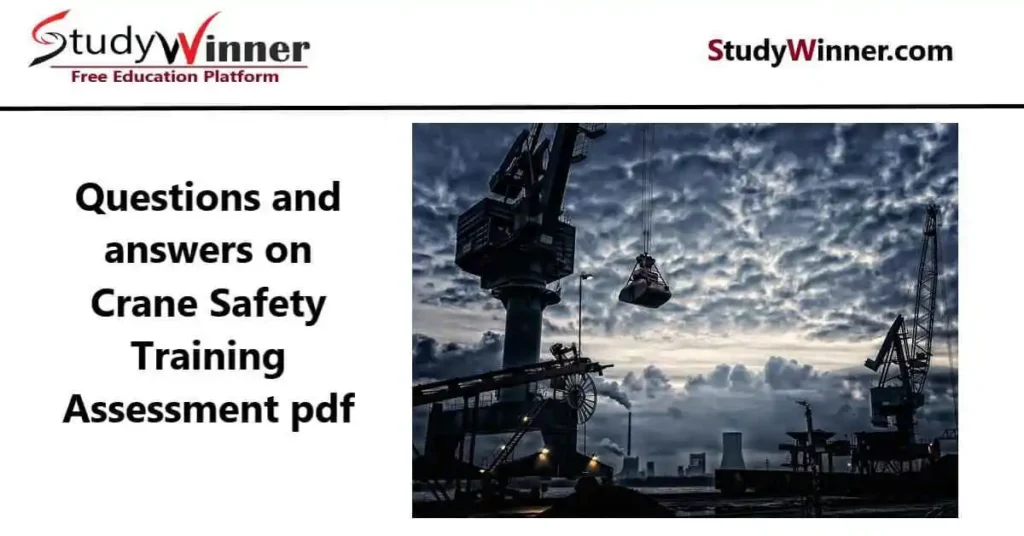Crane safety training assessment pdf
There are many types of cranes in this new technology world. Later, in this article, we will discuss questions and answers on crane safety training assessment pdf. Cranes are big machines, which help us to move heavy things up high.
Cranes are super helpful for big projects, but we need to stay safe. We should follow safety guidelines and instructions to avoid dangerous accidents.
Questions and answers on crane safety training assessment pdf: Operating these heavy cranes required proper certification. Operators must follow all the safety rules and regulations. The operator must inspect and maintain the crane timely.
Crane Safety questions and answers Key Points
Crane safety is super important to prevent dangerous accidents. Operators must ensure the safety of workers around these big machines. Let’s discuss some key safety points:
| Sr. No. | Crane safety measures and features |
| 1 | Crane operator training |
| 2 | Regular inspection of the cranes |
| 3 | Clear work area and weather awareness |
| 4 | Safe lifting practices and effective communication |
| 5 | Emergency procedures and maintenance of the cranes |
Crane operator training
People/Workers/Operators need special training to operate these big machines safely. This training program helps them to understand the equipment and how to handle these cranes safely. Operators trained for emergency conditions as well.
During crane safety training assessment pdf, operators learn about the crane parts, safety procedures, and potential hazards.
Regular inspection of the cranes
Before starting work of lifting heavy loads, the cranes undergo through safety inspections. Trained operators check crane’s parts, mechanical components and safety features. If there is any issue with cranes, then it should be fixed promptly to avoid accidents.
Clear work area and weather awareness
Clear work area is a very crucial zone for crane’s safety point of view. Only trained worker is allowed to enter in work area. Other workers should stay at a safe distance. Proper markings and barriers are used to avoid unauthorized entries.
Weather conditions like wind, storms or adverse weather significantly impact crane safety. Supervisors closely monitor the conditions of weather. If risk is there then they ask to halt the operations.
Safe lifting practices and effective communication
To avoid overloading and instability of the cranes, operators must follow guidelines related to load limit and procedure of lifting objects safely.
Communication between crane operators and other site workers should be vital for safe handling of crane.
Radios, hand signals or other methods followed during movements and actions of the cranes. It insures the safe lifting of heavy loads.
Emergency procedures and maintenance of the cranes
All operators and workers involved in crane operations is trained in emergency guidelines and protocols. If something went wrong during operations like load swinging, crane part or any equipment malfunction, accident then operators ensure swift or take effective action to avoid major accident.
The maintenance, inspection and regular check of the cranes should be done timely. This includes inspection of crane body parts, mechanical parts, lubricating components, breaks, emergency stops etc.
FAQs related to Questions and answers on crane safety
A. Following crane safety measures and features, we have discussed in this article. Which should be followed strictly to ensure the crane safety.
1. Operator training
2. Regular inspections of the cranes
3. Load limits and safe lifting practices
4. Clear work area
5. Weather awareness
6. Communication and signaling
7. Emergency procedures
8. Maintenance of the cranes
9. Safety devices and features
10. Safety training for all and post-work checks
A. Several crane safety issues can occur during crane operations.
1. Overloading
2. Falling objects
3. Rigging failures
4. Electrical hazards
5. Miscommunication between operator and worker
6. Unstable ground and weather conditions

